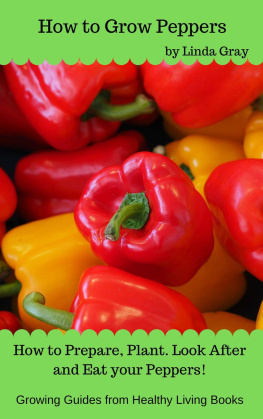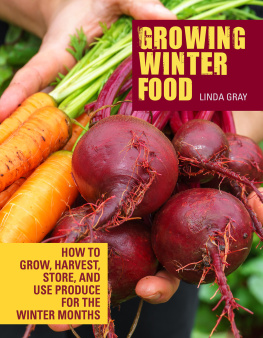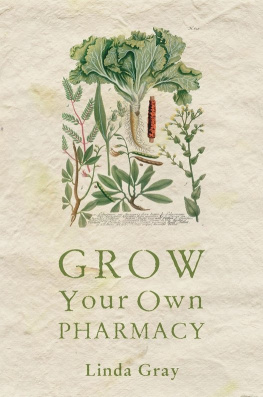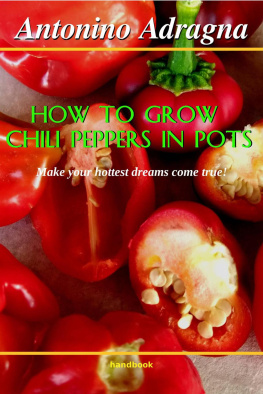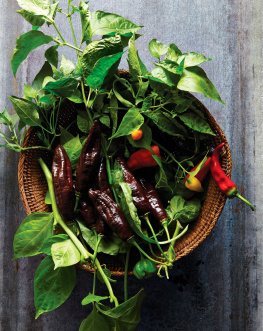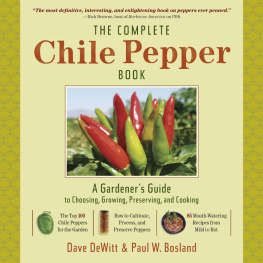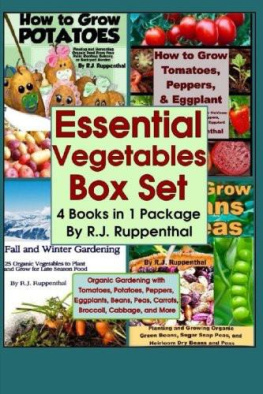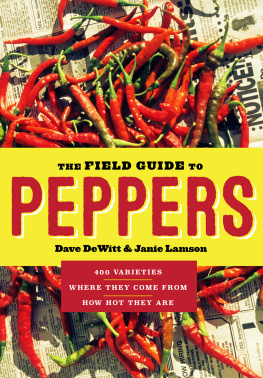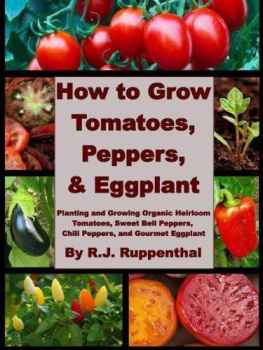How to Grow Peppers
Growing Guides
Linda Gray
Published by Linda Gray, 2017.
HOW TO GROW PEPPERS

T here is archaeological evidence of wild peppers being cultivated for human consumption as far back as 5000 BC.
Chilli peppers were thought, for centuries, to have originated in India, but they actually come from South America.
By the late 16th century, peppers were used in all regions of the world, especially in Europe and India.
There are many different varieties of peppers. They come in all shapes, colours and sizes. However, there are two main types:
-Sweet peppers
-Chilli peppers
Generally, you will need fewer chilli pepper plants as they produce many chilli peppers, as oppose to sweet pepper plants which will produce fewer fruits.
But decide on what you and your family will eat. If you dont use hot spices in your food very often, just grow one or two chilli pepper plants for when you do need them.
Healthy Reasons
Peppers are very high in vitamins A and C. The beta-carotene and lycopene content, especially in mature red fruits, means the pepper has antioxidant properties and has been proven to act on free radicals in the body.
Red peppers contain twice the amount of vitamin as green peppers.
Peppers also help the body absorb iron and calcium and are a beneficial food for convalescing patients.
Chilli peppers should be eaten in moderation, especially if you have a delicate stomach or arent used to hot spicy foods.
Live the Good Life with Healthy Living Books
www.healthylivingbooks.org
howtogrowpeppersLindaGray2021
CONTENTS
howtogrowpeppersLindaGray2021
T here are many different varieties of peppers you can grow and there are two main types - sweet peppers and chilli peppers. The following tips are good for both types, but some varieties will take up more or less space than suggested. Double check on the seed packet for growing advice.
There are a number of varieties of peppers you could grow. Thompson & Morgan have around 20 varieties of chilli peppers and about a dozen sweet peppers at time of writing. I think they only do UK deliveries at the moment.
Chilli Pepper 'Jalapeno M'

W idely known as the 'pizza pepper', Chili Pepper Jalapemo M is both colourful and tasty. The dark green and bright red fruits are produced on medium height chili plants (90cm/35in) and make attractive additions to the conservatory, greenhouse or a sheltered sunny spot in the garden.
Fruits are 8-10cm (3-5in) long, thick-walled and slightly tapering with blunt ends. Enjoy their striking colour whilst they're on the plant and then pick these versatile jalapeo peppers for use in a variety of dishes - not just sliced on pizza! Try them stuffed and baked, or use them fresh in a delicious and colourful salsa. Plants may need cane support.
Chilli Pepper 'Tabasco' (Very Hot)

F amed as the main ingredient of hot chilli sauce. Chilli Pepper 'Tabasco' produces small, upright, yellow-green fruits that turn scarlet when ripe. This very hot pepper is easy to grow in the greenhouse or in containers on a sunny patio. Height: 50cm (20"). Spread: 40cm (16").
Sweet Pepper 'Summer Salad Improved Mix'

W e didn't think we could do any better than Summer Salad, but we've re-assessed this selection of hybrids for even better greenhouse and garden performance. Sweet Pepper Summer Salad Mix consists of a the vibrant mix of lemon yellow, green, brown, orange and red fruiting varieties, but promises even better yields of both thick and thin walled fruits to suit stuffing, roasting, stir frying and salad use. One tasty mix to suit and highly coloured salads. Height: 100cm (39"). Spread: 50cm (20").
howtogrowpeppersLindaGray2021
Sweet Pepper 'Thor' F1 Hybrid

T he large, long peppers of this tasty variety gradually change from green to a glossy vibrant red and can reach lengths of up to 25cm (10"). Pepper 'Thor' produces an abundance of crops throughout summer if grown in the greenhouse, or a slightly later crop if grown in a sheltered, sunny spot outdoors. Sweet and crisp, this sweet pepper is delicious in salads or sliced lengthways and grilled or barbecued. Height: 150cm (59"). Spread: 60cm (24").
One thing about peppers that you need to know, is that they in the same family as potatoes and tomatoes, which means they can transfer diseases to each other. Diseases and viruses can linger in the soil, so its best to plant your peppers in an area where tomatoes or potatoes have not been grown in the previous couple of years.
Preparing the land
Peppers are originally a tropical plant and like to grow in warm soil, so a sunny position is best. However, the midday sun, if very hot, could scorch the leaves of plants and dry them out too quickly. Shade your plants from the midday sun if necessary.
Alternatively, peppers grow very well in containers and large pots, and can make a lovely display near the house. Containers can be moved into the shade if needed.
Dig over the ground as early in the spring as you can, as soon as its workable. Check at this point that the soil is well-drained. Peppers wont survive in water-logged soil. Dig in some well-rotted manure or compost if the soil is tired or lacking in nutrients.
Remove any perennial weeds, large stones and non-organic debris. Rake over and cover with black plastic (preferably plant-based if possible) or old rugs etc; until the plants are ready to put out.
The covering should be removed a week or so before planting to allow the soil time to breathe. Fork over the soil lightly before putting plants out.
If you are growing in pots or containers, make sure they are well-drained, well positioned and ready to fill with good organic fresh potting compost, or use your own compost if available.
howtogrowpeppersLindaGray2021

